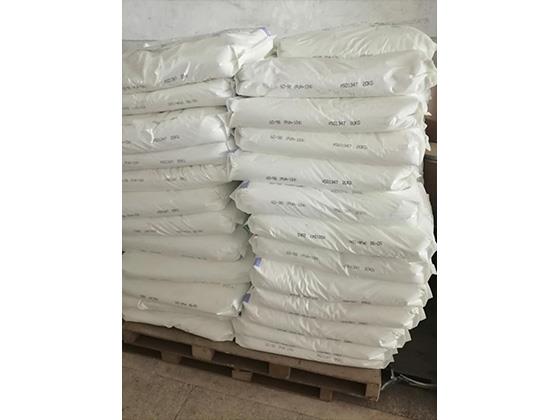新闻详情
Accidents and treatments for improper use of electronic grade PVA
Polyvinyl alcohol (PVA) is a white to slightly yellow solid or powder. It is a common water-soluble polymer compound which contains a large amount of hydroxyl groups in its molecular chain. It can form hydrogen bonds on the surface of the carbon anode material and has good adhesion.
Its appearance can be divided into floc, granular and powder. It is a widely used water soluble polymer. The viscosity of the aqueous solution increases as the degree of polymerization increases, and the strength and solvent resistance after film formation increase. Good lightfastness and unaffected by light. The disadvantage is that aqueous solutions sometimes become toxic when stored.
Accidents and treatments for improper use of electronic grade PVA:
Health hazards: Inhalation, ingestion is harmful to the body and has a stimulating effect on the eyes.
Explosion hazard: This product is flammable and irritating.
Skin contact: Remove contaminated clothing and rinse with tap water.
Eye contact: Lift your eyelids and rinse with tap water or saline. Seek medical assistance.
Inhalation: Move from the field to fresh air. If breathing is difficult, give oxygen. Seek medical assistance.
Ingestion: Drink plenty of warm water and induce vomiting. Seek medical assistance.
Hazardous properties: Powder and air form an explosive mixture. When a certain concentration is reached, Mars will explode. Decomposition by heating produces flammable gas.
Hazardous combustion products: carbon monoxide, carbon dioxide.
Fire Fighting Methods: Firefighters must wear gas masks, put on full-body fire suits, and put them in the wind. Extinguishing media: water spray, foam, dry powder, carbon dioxide, sand.
Emergency treatment: Isolation of contaminated areas and restricted access. Cut off the fire source. First-aid personnel are advised to wear dust masks (full face masks) and put on protective clothing. Avoid dusting, carefully clean it, put it in a bag, and transfer it to a safe place. It can also be rinsed with large amounts of water, diluted in water and placed in a wastewater system. If there is a lot of water leaking, cover it with plastic cloth and canvas. Collected for recycling or transported to a waste disposal site for disposal.

Related News
- What are the performance characteristics of PTFE micropowder?
- Analysis of the reason why PTFE is difficult to bond
- What are the characteristics of CMC and SBR?
- Application of PTFE emulsion in batteries and capacitors
- Application of lithium hydroxide in disc monoton
- Development prospects and applications of SBR latex
- Many foreign companies are concentrating on emerging markets in Asia! Carboxyl styrene-butadiene latex consumer sharing
- A wide range of uses for sodium hydroxide, you know a few
- Which industries will use carboxylated styrene butadiene latex
- Do you know the correct way to store lithium hydroxide?


